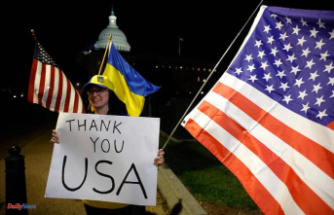The scientists are determined to prove that the numbers are everywhere, from the movement of the stars up in the parking lot of the supermarket. At least this is what I have tried to show the physical Paul Krapivsky (of Boston University) and Sidney Redner (the Santa Fe Institute), who have just published in the journal "Journal of Statistical Mechanics" a study that reveals the solution to one of the daily problems the human driver: did you attempt to park near the door or on the first site you see?
The situation is the following: arrive at the parking lot of the supermarket and you see some empty seats to leave the car. If you are one of the most conservative, then you have adopted what the researchers described as " strategy submissive ". On the other hand, if you continue your way and park at the following sites that you see, without reaching the door, your strategy is to " wise ". If, on the contrary, hurry up to the end thinking that if you've found sites before it is very likely that there is any better closer to the entrance, the strategy followed is the " optimistic ".
Pros and cons of eachIn their paper, Krapivsky and Redner studied these three postures simple of parking in a parking lot ideal for a single row. According to them, the best place to park is the one that allows you to spend less time in the actual car park. Drivers who take the first available space "do not lose time looking for a place to park ," but leave spaces near the entrance of the unfilled and you will need to walk more. Those who bet on finding a space right next to the entrance to "lead all the way up to the door, per or then flash back up to the vacancy nearest ", so that it is possible you have to give more laps to find site. Drivers "prudent" take the middle way, and lead beyond the first site is available; however, it is possible not to find it and that you also have to take another lap, since that the first sites will be occupied by the drivers, "submissive".
So, what strategy to adopt? "Mathematics allows you to make smart decisions", they said. They went on to the possible scenarios mathematical calculations and reasultó that the more complicated, was at the same time, the better.
In general, the option "prudent " -that was the most difficult to represent- cost drivers the least amount of time , closely followed by the strategy optimistic . The strategy submissive was "risiblemente unhelpful", according to the study, since many spaces that are left empty, they created a long walk to the entrance.
ideal Scenario against a real world scenarioRedner recognizes that the optimization problem is not can be applied to real life since it leaves aside issues such as the competition between cars, for example, or that assumes that the cars are following a uniform approach in each scenario, what are the assumptions unrealistic that the authors can address in a future model.
"If you really want to be an engineer, you have to take into account the quickly with the leading people, real designs of the parking lot and the spaces, and all of these things," he says. "Once you start to be completely realistic, you lose the possibility of explaining anything," he says - Still Redner defiente the study and their role: "we Live in a society collapsed and we always find phenomena crowded parking lots, traffic patterns, or whatever. But if you can look at it with eyes correct, you may find something useful."
Date Of Update: 25 September 2019, 10:03











